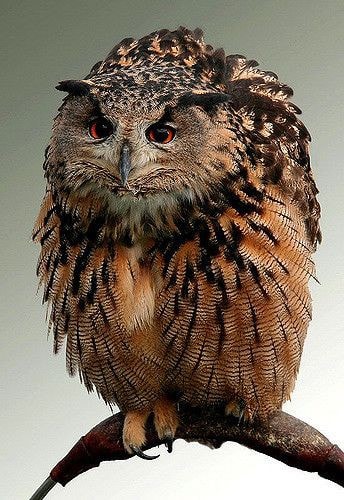Página inicial > Sophia Perennis > Frithjof Schuon > Schuon: Maya
 Schuon: Maya
Schuon: Maya
quarta-feira 28 de fevereiro de 2018, por
Original
La divine Maya , qui est à la fois métacosmique et cosmique, comporte essentiellement les puissances ou fonctions suivantes : d’abord la fonction de séparation ou de dédoublement, — à commencer par la scission en sujet et objet, — dont le but est la production d’un plan de manifestation pour les deux fonctions consécutives, le Rayonnement et la Réverbération, auxquels correspondent le mouvement et la forme. De même que, en Dieu, la Relativité constitue, en dehors de la Substance absolue, un’ plan d’actualisation du Rayonnement et de la Réverbération en tant que principes, de même elle projettera hors de cet ordre divin — en se projetant elle-même — un autre plan, éminemment plus relatif, à savoir le Cosmos total. Elle répétera à l’intérieur de ce Cosmos le même processus de segmentation en descendant jusqu’à ce point mort qu’est le monde matériel ; et sur chacun des plans qu’elle projettera ainsi en descendant — monde angélique, monde animique, monde matériel — elle manifestera un mode approprié de Rayonnement et de Réverbération ; il n’y a aucun ordre de Relativité qui ne comporte ces deux fonctions ou dimensions. L’élément Substance est représenté à chaque niveau ontologique ou cosmique selon le mode approprié ; à plus forte raison, la Substance pure ou la Substance en Soi est sous-jacente à chacune de ses manifestations secondaires.
Dans le monde matériel, Mâyâ sera le plan espace-temps ; la Substance sera l’éther ; la Réverbération ou l’Image sera la mati ère ; le Rayonnement sera l’énergie. Mais il y a encore, de toute évidence, des applications beaucoup plus restreintes du même symbolisme ; il en est forcément ainsi du moment que toute matière, toute forme et tout mouvement ou changement, se réfèrent respectivement aux trois principes dont il s’agit. La complémentarité « espace-temps » — ou « étendue-durée » concrète — indique du reste qu’il y a, dans la Relativité ou l’Existence comme telle4, deux dimensions, une expansive et conservatrice et l’autre transformatrice et destructive ; d’où la complémentarité entre les mondes et les cycles à tous les échelons de l’Univers. En Dieu lui-même, l’élément « Espace » est la Mâyâ en tant qu’elle contient ou conserve les possibilités, et l’élément « Temps » est la Mâyâ en tant qu’elle les transmet au monde ; la première face est intrinsèque et contemplative, et la seconde extrinsèque et créative, ou autrement dit : la première face contemple l’enracinement indifférencié des possibilités dans la Substance, tandis que la seconde réalise ces possibilités en vue de leur manifestation cosmique.
Perry & LaFouge
Divine Maya, which is both metacosmic and cosmic, comprises essentially the following powers or functions: first, the function of separation or partibility—beginning with the scission into subject and object—the aim of which is the production of a plane of manifestation for the two consecutive functions, Radiance and Reverberation, to which motion and form correspond. Just as, in God, Relativity constitutes—though outside of absolute Substance—a plane for the actualization of Radiance and Reverberation as principles, so too it projects forth from this divine order—by projecting itself—another plane that is distinctly more relative, namely the entire Cosmos. The same process of segmentation is then repeated within this Cosmos, down to that terminal point marked by the material world; and on each one of the planes thus projected in its descent—the angelic world, the animic world, the material world—it will manifest an appropriate mode of Radiance and Reverberation; there is no order of Relativity that does not comprise these two functions or dimensions. The element Substance is represented at each ontological or cosmic level according to an appropriate mode; and with all the more reason, pure Substance, or Substance as such, underlies each one of its secondary manifestations.
In the material world, Maya will be the plane of space and time; Substance will be ether; Reverberation or the Image will be matter; and Radiance will be the energy. But needless to say, there are still far more restricted applications of the same symbolism, and inevitably so, given that all matter, all form, and all motion or change refer respectively to the three principles involved. The complementarity of “space-time”—or, in concrete terms, “extension-duration”—indicates moreover that there are, in Relativity or Ex-sistence as such, two dimensions, the one expansive and conserving and the other transforming and destructive; whence the complementarities between the worlds and cycles at all levels of the Universe. Within God Himself, the element “Space” is Maya inasmuch as it contains or conserves the possibilities, and the element “Time” is Maya inasmuch as it transmits these to the world; the first aspect is intrinsic and contemplative, and the second aspect is extrinsic and creative; in other words, the first aspect of Maya contemplates the undifferentiated groundedness of the possibilities in the Substance, whereas the second aspect enables the realization of these possibilities in view of their cosmic manifestation.
 PhiloSophia
PhiloSophia